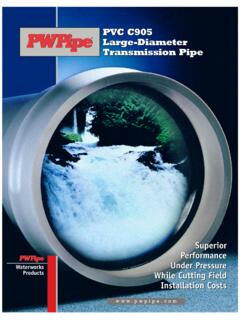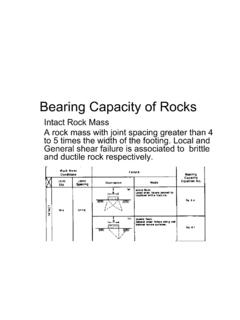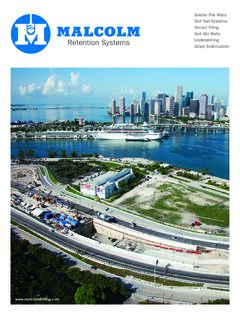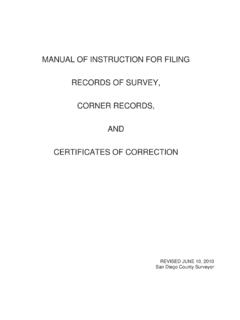Transcription of LANT INGDOM - NCERT
1 PLANT KINGDOM29In the previous chapter, we looked at the broad classification of livingorganisms under the system proposed by Whittaker (1969) wherein hesuggested the Five Kingdom classification viz. Monera, Protista, Fungi,Animalia and Plantae. In this chapter, we will deal in detail with furtherclassification within Kingdom Plantae popularly known as the plantkingdom .We must stress here that our understanding of the plant kingdomhas changed over time. Fungi, and members of the Monera and Protistahaving cell walls have now been excluded from Plantae though earlierclassifications placed them in the same kingdom. So, the cyanobacteriathat are also referred to as blue green algae are not algae any more. Inthis chapter, we will describe Plantae under Algae, Bryophytes,Pteridophytes, Gymnosperms and us also look at classification within angiosperms to understandsome of the concerns that influenced the classification systems.
2 Theearliest systems of classification used only gross superficial morphologicalcharacters such as habit, colour, number and shape of leaves, etc. Theywere based mainly on vegetative characters or on the androeciumstructure (system given by Linnaeus). Such systems were artificial; theyseparated the closely related species since they were based on a fewcharacteristics. Also, the artificial systems gave equal weightage tovegetative and sexual characteristics; this is not acceptable since we knowthat often the vegetative characters are more easily affected byenvironment. As against this, natural classification systems developed,which were based on natural affinities among the organisms and consider,PLANT KINGDOMCHAPTER Life Cyclesand Alternationof Generations2015-16(19/01/2015)30 BIOLOGYnot only the external features, but also internal features, like ultra-structure, anatomy, embryology and phytochemistry.
3 Such aclassification for flowering plants was given by George Bentham andJoseph Dalton present phylogenetic classification systems based onevolutionary relationships between the various organisms are assumes that organisms belonging to the same taxa have a commonancestor. We now use information from many other sources too to helpresolve difficulties in classification. These become more important whenthere is no supporting fossil evidence. Numerical Taxonomy which isnow easily carried out using computers is based on all observablecharacteristics. Number and codes are assigned to all the characters andthe data are then processed. In this way each character is given equalimportance and at the same time hundreds of characters can beconsidered. Cytotaxonomy that is based on cytological information likechromosome number, structure, behaviour and chemotaxonomy thatuses the chemical constituents of the plant to resolve confusions, are alsoused by taxonomists these are chlorophyll-bearing, simple, thalloid, autotrophic and largelyaquatic (both fresh water and marine) organisms.
4 They occur in a varietyof other habitats: moist stones, soils and wood. Some of them also occurin association with fungi (lichen) and animals ( , on sloth bear).The form and size of algae is highly variable (Figure ). The sizeranges from the microscopic unicellular forms like Chlamydomonas, tocolonial forms like Volvox and to the filamentous forms like Ulothrix andSpirogyra. A few of the marine forms such as kelps, form massive algae reproduce by vegetative, asexual and sexual reproduction is by fragmentation. Each fragment develops intoa thallus. Asexual reproduction is by the production of different types ofspores, the most common being the zoospores. They are flagellated(motile) and on germination gives rise to new plants. Sexual reproductiontakes place through fusion of two gametes. These gametes can beflagellated and similar in size (as in Chlamydomonas) or non-flagellated(non-motile) but similar in size (as in Spirogyra).
5 Such reproduction iscalled isogamous. Fusion of two gametes dissimilar in size, as in somespecies of Chlamydomonas is termed as anisogamous. Fusion betweenone large, non-motile (static) female gamete and a smaller, motile malegamete is termed oogamous, , Volvox, (19/01/2015)PLANT KINGDOM31 Figure Algae :(a) Green algae (i) Volvox (ii) Chlamydomonas (iii) Chara(b) Brown algae (i) Laminaria (ii) Fucus (iii) Dictyota(c) Red algae (i) Porphyra (ii) Polysiphonia(a-i)(c-i)(c-ii)(a-iii)Frond Main axisBranchesParentcolonyFlagella(b-i)(b- ii)(b-iii)FrondStipeHoldfastAir bladderMidribHoldfastFrondStipeFrondDaug htercolonyBranchesAxis(a-ii)2015-16(19/0 1/2015)32 BIOLOGYA lgae are useful to man in a variety of ways. At least a half of the totalcarbon dioxide fixation on earth is carried out by algae throughphotosynthesis. Being photosynthetic they increase the level of dissolvedoxygen in their immediate environment.
6 They are of paramountimportance as primary producers of energy-rich compounds which formthe basis of the food cycles of all aquatic animals. Many species of Porphyra,Laminaria and Sargassum are among the 70 species of marine algaeused as food. Certain marine brown and red algae produce large amountsof hydrocolloids (water holding substances), , algin (brown algae) andcarrageen (red algae) which are used commercially. Agar, one of thecommercial products obtained from Gelidium and Gracilaria are used togrow microbes and in preparations of ice-creams and jellies. Chlorella aunicellular alga, rich in proteins is used as food supplement even byspace travellers. The algae are divided into three main classes:Chlorophyceae, Phaeophyceae and members of chlorophyceae are commonly called green algae. Theplant body may be unicellular, colonial or filamentous. They are usuallygrass green due to the dominance of pigments chlorophyll a and b.
7 Thepigments are localised in definite chloroplasts. The chloroplasts may bediscoid, plate-like, reticulate, cup-shaped, spiral or ribbon-shaped indifferent species. Most of the members have one or more storage bodiescalled pyrenoids located in the chloroplasts. Pyrenoids contain proteinbesides starch. Some algae may store food in the form of oil algae usually have a rigid cell wall made of an inner layer of celluloseand an outer layer of reproduction usually takes place by fragmentation or byformation of different types of spores. Asexual reproduction is byflagellated zoospores produced in zoosporangia. The sexual reproductionshows considerable variation in the type and formation of sex cells and itmay be isogamous, anisogamous or oogamous. Some commonly foundgreen algae are: Chlamydomonas, Volvox, Ulothrix, Spirogyra and Chara(Figure ). members of phaeophyceae or brown algae are found primarily inmarine habitats.
8 They show great variation in size and form. They rangefrom simple branched, filamentous forms (Ectocarpus) to profuselybranched forms as represented by kelps, which may reach a height of100 metres. They possess chlorophyll a, c, carotenoids and vary in colour from olive green to various shades of brown dependingupon the amount of the xanthophyll pigment, fucoxanthin present in2015-16(19/01/2015)PLANT KINGDOM33them. Food is stored as complex carbohydrates, which may be in theform of laminarin or mannitol. The vegetative cells have a cellulosic wallusually covered on the outside by a gelatinous coating of algin. Theprotoplast contains, in addition to plastids, a centrally located vacuoleand nucleus. The plant body is usually attached to the substratum by aholdfast, and has a stalk, the stipe and leaf like photosynthetic organ the frond. Vegetative reproduction takes place by fragmentation.
9 Asexualreproduction in most brown algae is by biflagellate zoospores that arepear-shaped and have two unequal laterally attached reproduction may be isogamous, anisogamous or of gametes may take place in water or within the oogonium(oogamous species). The gametes are pyriform (pear-shaped) and beartwo laterally attached flagella. The common forms are Ectocarpus, Dictyota,Laminaria, Sargassum and Fucus (Figure ). members of rhodophyceae are commonly called red algae because ofthe predominance of the red pigment, r-phycoerythrin in their body. Majorityof the red algae are marine with greater concentrations found in the warmerareas. They occur in both well-lighted regions close to the surface of waterand also at great depths in oceans where relatively little light red thalli of most of the red algae are multicellular. Some of themhave complex body organisation.
10 The food is stored as floridean starchwhich is very similar to amylopectin and glycogen in red algae usually reproduce vegetatively by fragmentation. Theyreproduce asexually by non-motile spores and sexually by non-motileTABLE Divisions of Algae and their Main CharacteristicsClassesCommonMajorStoredC ell WallFlagellarHabitatNamePigmentsFoodNumb er andPosition ofInsertionsChlorophyceaeGreenChlorophyl lStarchCellulose2-8, equal,Fresh water,algaea, bapicalbrackish water,salt waterPhaeophyceaeBrownChlorophyllMannito l,Cellulose2, unequal,Fresh wateralgaea, c,laminarinand alginlateral(rare) brackishfucoxanthinwater, saltwaterRhodophyceaeRedChlorophyllFlori deanCellulose,AbsentFresh wateralgaea, d,starchpectin and(some),phycoerythrinpolybrackishsulph atewater, saltesterswater (most)2015-16(19/01/2015)34 BIOLOGY gametes. Sexual reproduction is oogamous and accompanied by complexpost fertilisation developments.

















